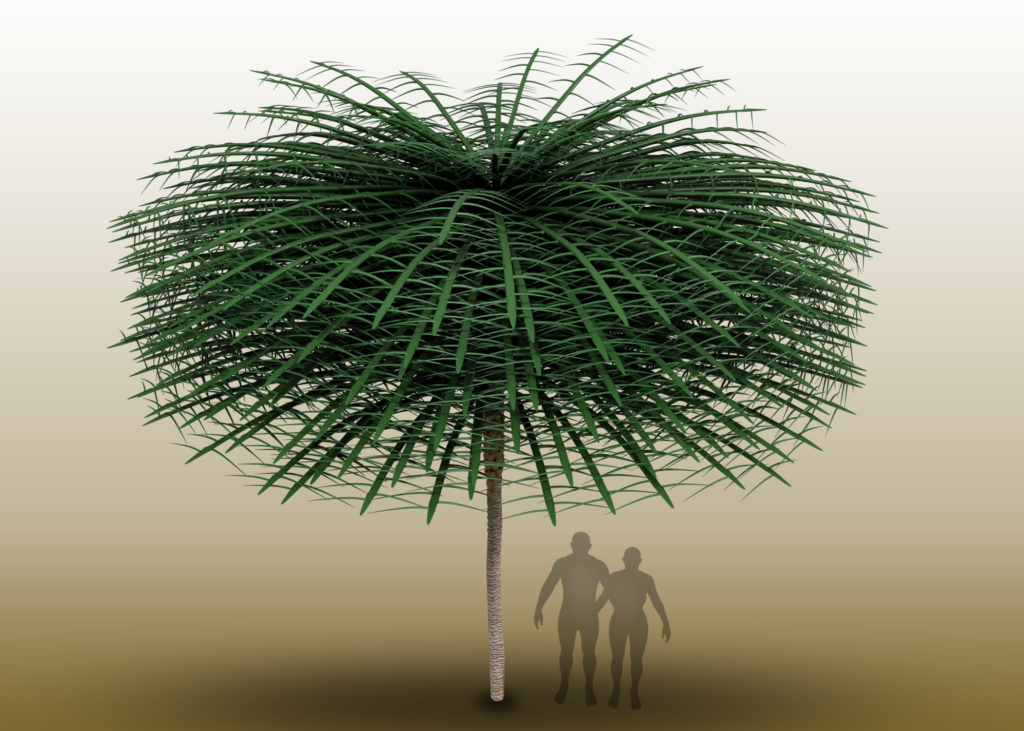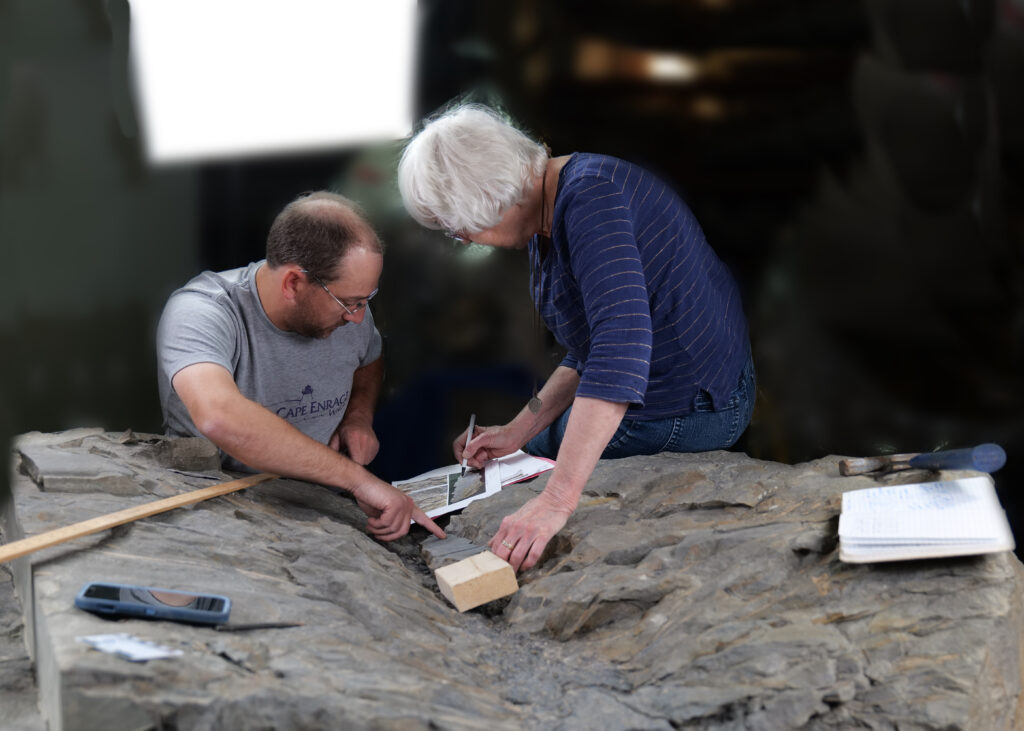Saint John, NB – February 5, 2024 – The New Brunswick Museum (NBM) is excited to announce the publication of a remarkable discovery in New Brunswick palaeontology: the unveiling of a rare 3D fossilized tree that sheds new light on the evolution of early plant life.
The discovery was made in 2017 by Matt Stimson, NBM Assistant Curator of Geology and Palaeontology and Olivia King, NBM Research Associate and Saint Mary’s University (Halifax) graduate student, near the village of Norton (now called Valley Waters). The fossil dates to the early Carboniferous period, approximately 350 million years ago. The discovery is being featured in the most recent issue of the prestigious peer-reviewed scientific journal, Current Biology.
“The recent publication is the result of six years of research by an international research team from the New Brunswick Museum and US institutions,” said Matt Stimson. “This fossil tree species is unique. A failed experiment in evolution at a time when all life on land was diversifying, including amphibians, and apparently plants as well.”
The several fossil trees discovered have been named Sanfordiacaulis, in honour of the quarry operator Laurie Sanford. “I cannot emphasize enough the importance of local people, quarry operators, and citizen scientists and the key role that they play in New Brunswick discoveries in palaeontology,” said Stimson.
Sanfordiacaulis presents a unique spectacle, unseen in the fossil record before. The most remarkable feature of this tree lies in the way it sprouted extensive foliage around a slender trunk, with an astonishing abundance of leaves clustered closely together. Unlike typical plant fossils, the Sanfordiacaulis remains have retained their leaves and branches intact, a rarity in the fossil record. This exceptional preservation has sparked curiosity among researchers, prompting the question: why are these fossils so well-preserved?
Recent findings reveal that the quarry rocks primarily represent aquatic deposits from an ancient lake. The sandstones, which house not only Sanfordiacaulis, but numerous other plant fossils, exhibit signs of seismic activity. Insights provided by Dr. Adrian Park and Steve Hinds of the New Brunswick Geological Survey, along with contributions from Dr. Andrew MacRae of Saint Mary’s University, suggest that these trees were alive during an ancient earthquake. The resulting landslides submerged the trees on a lake bottom, ensuring swift burial and the preservation of their leaves and branches in a rare 3D state. The findings of Dr. Parks and colleagues enhance our understanding of the fossilization process and the geological events that shaped these unique specimens.
To download a copy of the Current Biology article and related image(s), please click here.
###
About New Brunswick Museum
The New Brunswick Museum is the oldest continuing museum in Canada, dedicated to preserving and showcasing the rich history, art, and natural heritage of New Brunswick. With a commitment to education, research, and community engagement, the NBM serves as a hub for exploration, learning, and appreciation of New Brunswick’s vibrant past and present. To learn more, visit nbm-mnb.ca.
For more information:
Vanessa Burley
Duke Creative Collective
506-643-1293
vanessa@thisisduke.com


